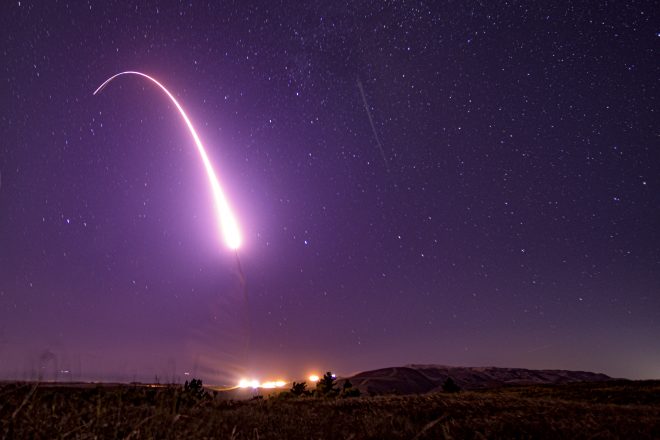
The following is the Oct. 14, 2020 Congressional Research Service report, The New START Treaty:
Central Limits and Key Provisions.
From the report
The United States and Russia signed the New START Treaty on April 8, 2010. After more than 20 hearings, the U.S. Senate gave its advice and consent to ratification on December 22, 2010, by a vote of 71-26. Both houses of the Russian parliament—the Duma and Federation Council—approved the treaty in late January 2011 and it entered into force on February 5, 2011. Both parties met the treaty’s requirement to complete the reductions by February 5, 2018. The treaty is due to expire in February 2021, unless both parties agree to extend it for no more than five years.
New START provides the parties with 7 years to reduce their forces, and will remain in force for a total of 10 years. It limits each side to no more than 800 deployed and nondeployed land-based intercontinental ballistic missile (ICBM) and submarine-launched ballistic missile (SLBM) launchers and deployed and nondeployed heavy bombers equipped to carry nuclear armaments. Within that total, each side can retain no more than 700 deployed ICBMs, deployed SLBMs, and deployed heavy bombers equipped to carry nuclear armaments. The treaty also limits each side to no more than 1,550 deployed warheads; those are the actual number of warheads on deployed ICBMs and SLBMs, and one warhead for each deployed heavy bomber.
New START contains detailed definitions and counting rules that will help the parties calculate the number of warheads that count under the treaty limits. Moreover, the delivery vehicles and their warheads will count under the treaty limits until they are converted or eliminated according to the provisions described in the treaty’s Protocol. These provisions are far less demanding than those in the original START Treaty and will provide the United States and Russia with far more flexibility in determining how to reduce their forces to meet the treaty limits.
The monitoring and verification regime in the New START Treaty is less costly and complex than the regime in START. Like START, though, it contains detailed definitions of items limited by the treaty; provisions governing the use of national technical means (NTM) to gather data on each side’s forces and activities; an extensive database that identifies the numbers, types, and locations of items limited by the treaty; provisions requiring notifications about items limited by the treaty; and inspections allowing the parties to confirm information shared during data exchanges.
New START does not limit current or planned U.S. missile defense programs. It does ban the conversion of ICBM and SLBM launchers to launchers for missile defense interceptors, but the United States never intended to pursue such conversions when deploying missile defense interceptors. Under New START, the United States can deploy conventional warheads on its ballistic missiles, but these will count under the treaty limit on nuclear warheads.
The Obama Administration and outside analysts argued that New START strengthens strategic stability and enhances U.S. national security. Critics, however, questioned whether the treaty would serve U.S. national security interests because, they argued in 2010, Russia was likely to reduce its forces with or without an arms control agreement and because the United States and Russia no longer need arms control treaties to manage their relationship. The 2018 Nuclear Posture Review confirmed that the United States would continue to implement the treaty, at least through 2021. The Trump Administration has raised questions about the value of the treaty and, although it has not announced a decision about extension, has suggested that the United States might allow it to lapse while negotiating a new treaty that would include Russia and China, and capture all types of Russian nuclear weapons.
Download the document here.
"start" - Google News
October 22, 2020 at 07:35PM
https://ift.tt/35ncJo3
Report to Congress on New START Treaty - USNI News - USNI News
"start" - Google News
https://ift.tt/2yVRai7
https://ift.tt/2WhNuz0
Bagikan Berita Ini














0 Response to "Report to Congress on New START Treaty - USNI News - USNI News"
Post a Comment